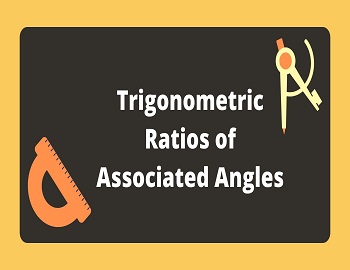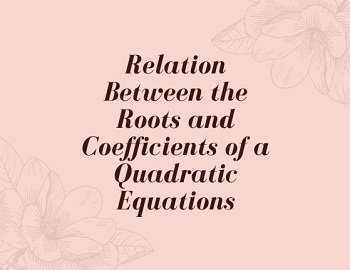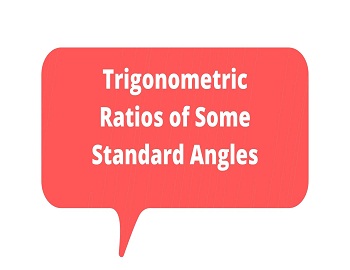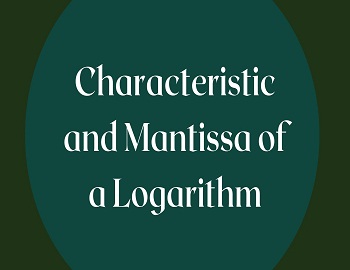Table of Contents
Restricted Combinations:
Restricted combinations refer to a method of counting the number of ways in which a limited or restricted set of items can be combined. For example, suppose you have a set of five objects, and you want to choose three of them. However, there are certain restrictions that limit the possible combinations. Maybe two of the objects are identical and cannot be selected together, or perhaps you must choose at least one item from a particular subset of the set.
Number of combinations of n different things taken any number at a time:
Obviously, there are two possibilities for a particular thing- either it is selected, or it is left out. This is true for each of the n different objects. Now, each way of selecting an object is to be associated with each way of selecting the other things. Hence, the total number of combinations = 2 x 2 x 2 … to n factors = 2n.
But the total number of combinations calculated as above includes one case in which all the things have been left out which is inadmissible.
Hence, the required number of combinations = 2n – 1
| Corollary- Number of combinations of n different things taken any number at a time = nC1 + nC2 + nC3 + … + nCn. From the discussion made above, this total number is 2n – 1. Thus, nC1 + nC2 + nC3 + … + nCn = 2n – 1. |
Total Number of Combinations by taking any number at a time when the things are not all different:
Let there be (p + q + r + …) objects in which p things are alike of one kind, q things are alike of a second kind, r things are alike of a third kind, and so on. We are to find out the total number of combinations of these things taking any number at a time.
Now, p alike things of the first kind can be selected in (p + 1) ways, since one can select 1, 2, 3, … p of them or none at all. Also, for each way of selection of things of the first kind, the second kind of things can be selected in (q + 1) ways. Thus, the total number of combinations of the first and second kinds of things is (p + 1) (q + 1). Similarly, the total number of combinations of p like things of the first kind, q like things of the second kind, and r like things of the third kind is (p + 1) (q + 1) (r + 1). Therefore, the total number of combinations = (p + 1) (q + 1) (r + 1) …, which includes the case in which none of the things has been taken, which is inadmissible.
Hence, the required total number of combinations = { (p + 1) (q + 1) (r + 1) … } – 1
Division into Groups:
(a) Number of ways in which (m + n) different things can be divided into two groups containing m and n things respectively.
Here, m things can be selected out of (m + n) different things in m+nCm ways. For each of these m+nCm selections, the second group can be selected in nCn ways (as after selecting m things for the first group, there will be n things remaining, all of which are to be included in the second group).
Thus, the required number of selections, m+nCm x nCn = (m + n)! / (m! n!)
Note: If each of the two groups is to contain an equal number of objects, then the interchange of the group, would not give any new distribution. In that case, the total number of combinations would be (2m!) / [(m!)2 (2!)].
But if 2m different objects are distributed equally among two persons, the number of ways would be (2m!) / (m!)2 (the reason is obvious because in this case, the interchange of the two sets of objects makes a different distribution since the persons are different).
(b) Total number of ways in which (p + q + r) different things can be divided into three groups containing p, q, and r objects respectively.
Here, p things can be selected out of (p + q + r) different things in p+q+rCp ways. For each of these selections, the second group containing q things can be selected from the remaining q + r objects in q+rCq ways. Also, when the first and the second groups have been selected, the third group containing r things can be selected from the remaining r things in rCr ways.
| Thus, the required number of selections = p+ q+rCp x q+rCq x rCr = [(p + q + r)! / (p!) (q + r)!] [(q + r)! / (q!) (r!)] [(r!) / (r!) (0!)] = (p + q + r)! / p! q! r! |
Note: If each of the three groups contains an equal number of objects i.e. if p = q = r, then the interchange of the three groups will not give any new distribution. As the three groups can be interchanged in 3! ways, the total number of combinations in this case will be reduced by a factor 3!. Hence, the total number of combinations of 3p different objects in three groups equally is (3p)! / [(p!)3 (3!)].
But, if 3p different objects be distributed equally among three persons, then the number of selections, as discussed earlier would be (3p)! / (p!)3.
| Example 1: Find the number of ways in which a committee of 4 men and 3 women can be formed from 6 men and 8 women. Solution- Four men out of six men can be selected in 6C4 ways and three women out of eight women can be selected in 8C3 ways. ∴ Total number of ways = 6C4 x 8C3 = [(6 x 5 x 4 x 3) / (4 x 3 x 2 x 1)] [(8 x 7 x 6) / 3 x 2 x 1] = 840 |
| Example 2: A committee of 5 is to be selected from amongst 6 gentlemen and 5 women. Determine the number of ways if it is to contain at least 1 gentleman and 1 woman. Solution- The selection of five persons which includes at least one man and one woman from six men and five women can be done in the following ways. I: 1 man and 4 women II: 2 men and 3 women III: 3 men and 2 women IV: 4 men and 1 woman ∴ number of ways = 6C1 x 5C4 + 6C2 x 5C3 + 6C3 x 5C2 + 6C4 x 5C1 = 6 x 5C1 + 6C2 + 5C2 + 6C3 x 5C2 + 6C2 x 5C1 = 6 x 5 + (6 x 5 / 2 x 1) + (5 x 4 / 2 x 1) + (6 x 5 x 4 / 3 x 2 x 1) x (5 x 4 / 2 x 1) + (6 x 5 / 2 x 1) x (5) = 30 + 150 + 200 + 75 = 455 |
| Example 3: There are 12 points on a plane, no three of which are collinear except 5 which are in one line. Find the number of (i) straight lines (ii) number of triangles formed Solution-(i) A straight line is formed by joining two points at a time. So the number of straight lines formed from 12 points taken 2 at time = 12C2 But 5 out of these twelve points are collinear, so no straight line can be obtained by joining them except the 1 which contains these five points. So instead of getting 5C2 lines, we got only one line. So number of straight lines formed = 12C2 – 5C2 + 1 = (12 x 11 / 2 x 1) – (5 x 4 / 2 x 1) + 1 = 66 – 10 + 1 = 57 (ii) A triangle is formed by joining three points at a time. So the number of triangles formed from 12 points taken three at a time = 12C3 But 5 out of these twelve points are collinear, so no triangle can be obtained by joining these five points. So, the number of triangles formed = 12C3 – 5C3 = (12 x 11 x 10 / 3 x 2 x 1) – 5C2 = 220 – (5 x 4 / 2 x 1) = 220 – 10 = 210 |
| Example 4: A cricket team of 11 players is to be formed from 16 players including 4 bowlers and 2 wicketkeepers. In how many different ways can a team be formed so that it contains at least 3 bowlers and at least one wicketkeeper? Solution- Number of bowlers = 4 Number of wicketkepers = 2 and Number of batsmen = 10 Now, the selection of 11 players from 16 players which includes at least 3 bowlers and at least one wicketkeeper can be done in the following ways- I: Selecting 3 bowlers, 1 wicketkeeper In this case, selection can be done in 4C3 x 2C2 x 10C7 = 4 x 2 x (10 x 9 x 8 / 3 x 2 x 1) = 960 II: Selecting 3 bowlers, 2 wicketkeepers In this case, selection can be done in 4C3 x 2C2 x 10C6 = 4 x 1 x (10 x 9 x 8 x 7) / (4 x 3 x 2 x 1) = 840 III: Selecting 4 bowlers and 1 wicketkeeper In this case, selection can be done in 4C4 x 2C1 x 10C6 = 1 x 2 x (10 x 9 x 8 x 7) / (4 x 3 x 2 x 1) = 420 IV: Selecting 4 bowlers and 1 wicketkeeper In this case, selection can be done in 4C4 x 2C2 x 10C5 = 1 x 1 x (10 x 9 x 8 x 7 x 6) / (5 x 4 x 3 x 2 x 1) = 252 ∴ Total number of ways = 960 + 840 + 420 + 252 = 2472 |









Comments (No)